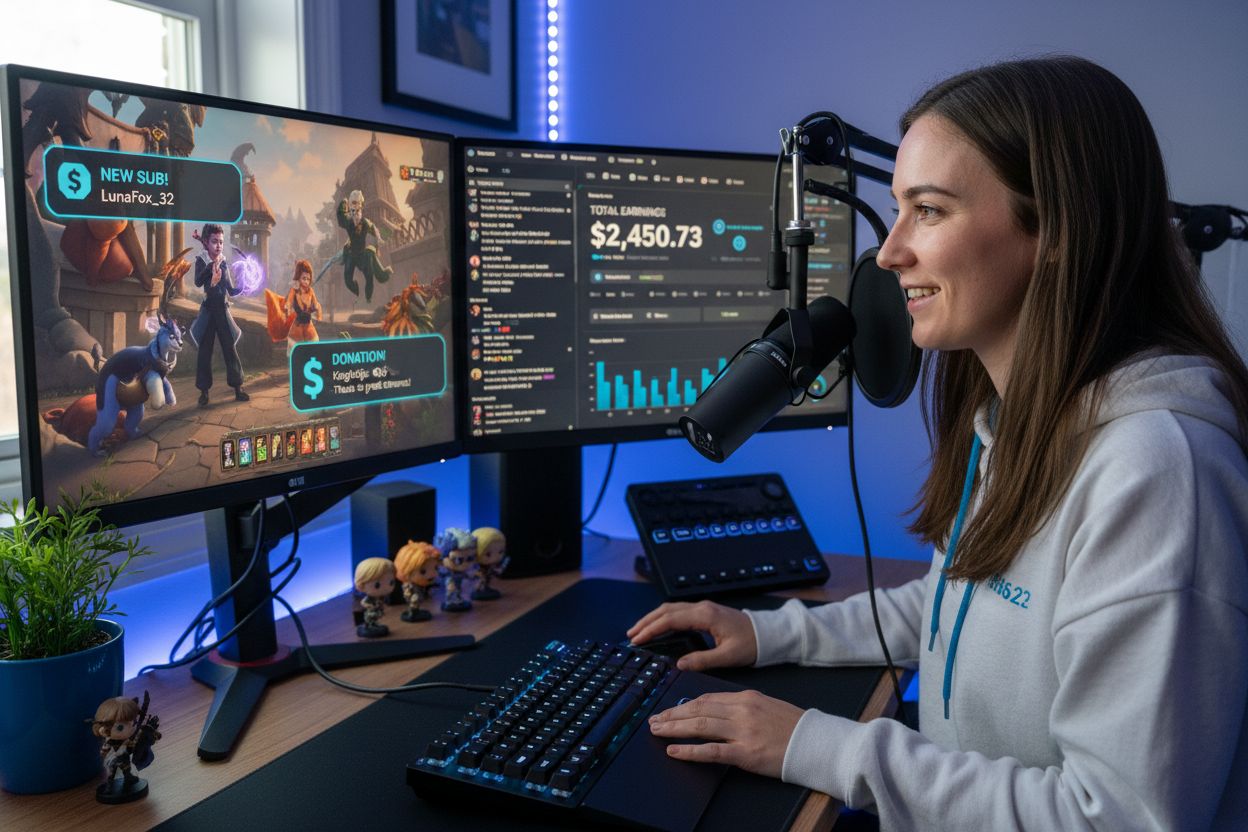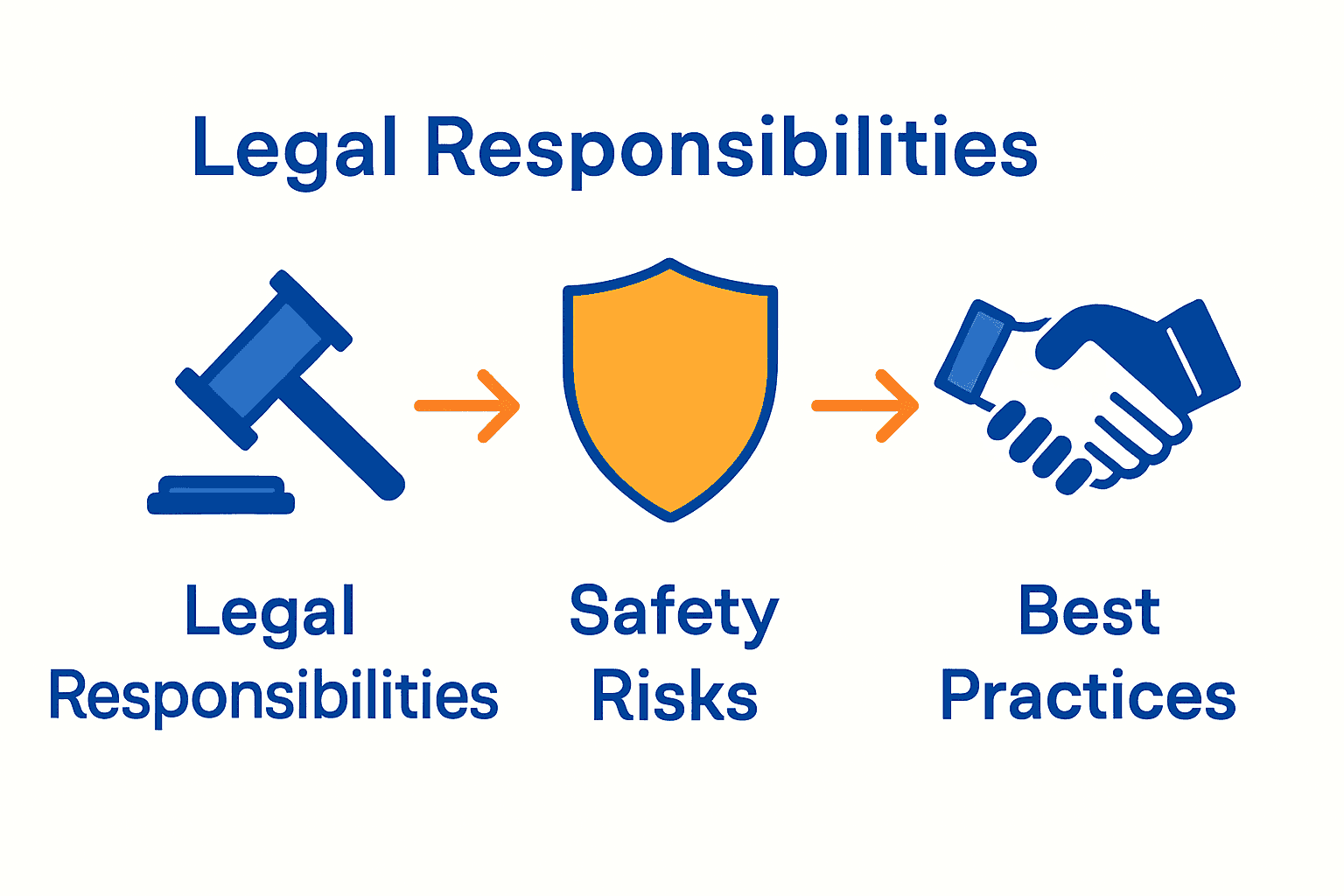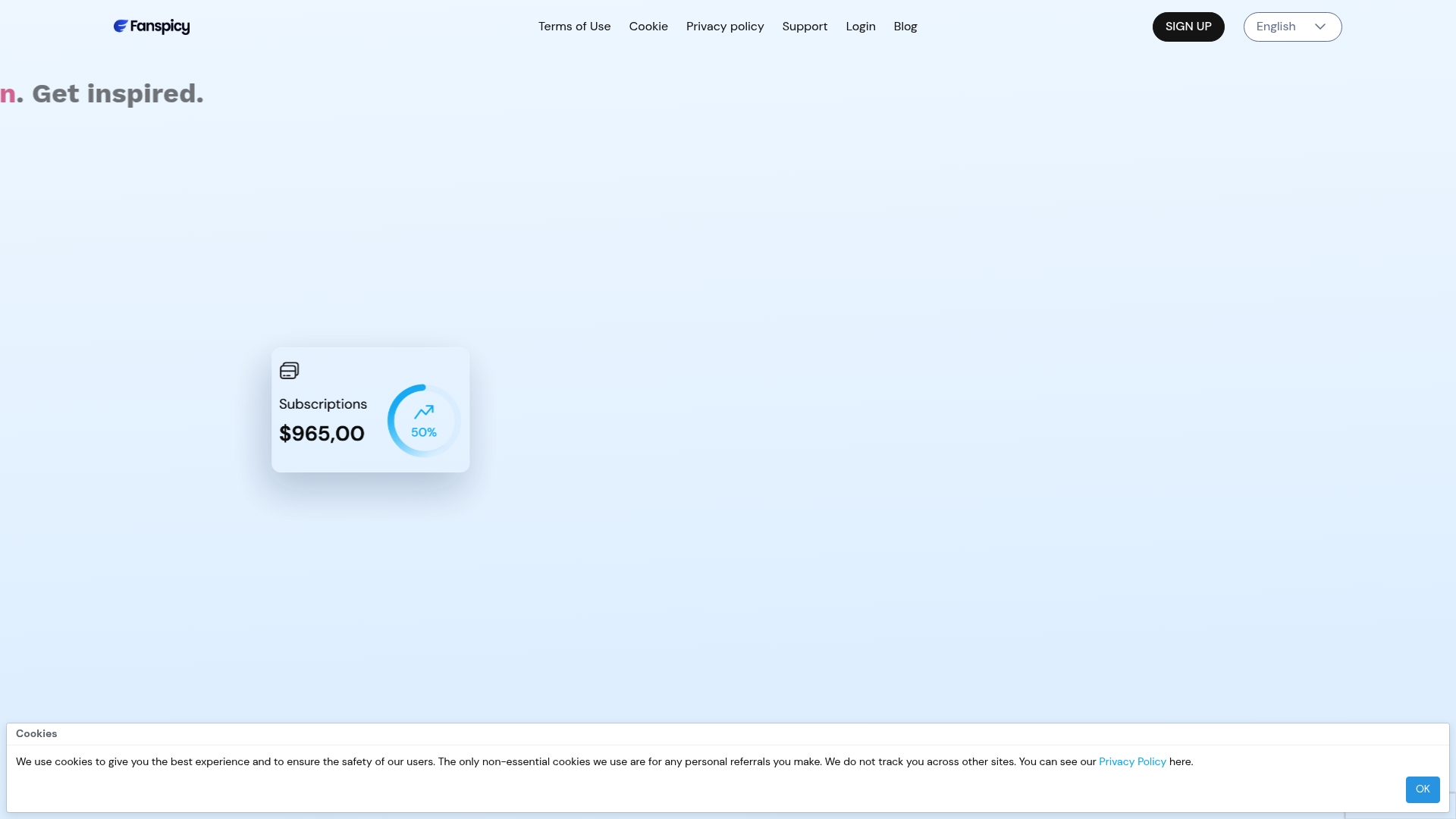Índice
Over 7.7 billion people can tune into live streams from anywhere in the world at any moment, connecting with creators in real time. Whether you are sharing a concert, running a workshop, or chatting with fans, this digital shift changes how we interact and experience content. With tech making it easier than ever, live streaming lets anyone broadcast instantly and reach huge audiences while creating spontaneous connections that feel authentic and personal.
Principais conclusões
| Point | Details |
|---|---|
| Engajamento em tempo real | Live streaming allows direct, unfiltered connections between creators and audiences, enhancing personal engagement and interaction. |
| Diverse Monetization Strategies | Creators can explore various revenue streams such as subscriptions, donations, and sponsorships beyond traditional advertising. |
| Evolving Technology | Advancements like AI enhancements and low-latency protocols are improving the quality and accessibility of live streaming. |
| Legal Awareness | Creators must understand platform policies, legal responsibilities, and safety risks to maintain a responsible streaming presence. |
Índice
- What Exactly Is Live Streaming?
- Live Streaming Types And Platforms
- How Live Streaming Functions Technically
- Monetization And Creator Engagement
- Legal Responsibilities And Safety Risks
What Exactly Is Live Streaming?
Transmissão ao vivo is a real-time digital broadcasting method that allows creators to transmit video and audio content directly to audiences across the internet. According to IBM, it fundamentally differs from traditional broadcasting by providing global audience access, interactive communication channels, and significantly lower production costs.
At its core, live streaming enables instant, unfiltered connection between content creators and viewers. Unlike pre-recorded videos, live streams happen in the moment – creating genuine, unscripted experiences that feel more personal and engaging. Popular platforms like Facebook Live, Twitch, and YouTube have transformed how people consume content, allowing everything from gaming sessions and concerts to personal vlogs and professional events to be shared instantly.
Key characteristics that define live streaming include:
- Real-time transmission of audio and video
- Interactive chat and reaction features
- Lower technical barriers to entry
- Direct audience engagement
- Flexible scheduling and content creation
For creators in paid social media platforms, live streaming represents a powerful tool to build authentic connections, monetize content, and create more intimate viewer experiences. The technology allows direct interaction, making audiences feel personally connected to the streamer in ways traditional media cannot replicate.
Live Streaming Types And Platforms
Live streaming platforms are diverse ecosystems supporting various content types and audience interactions. According to Wikipedia, services span multiple domains including social media, professional sports, video gaming, and global events, with major platforms like Facebook Live, YouTube, and Twitch dominating the digital landscape.
The streaming landscape has dramatically evolved, offering creators unprecedented ways to connect with audiences. Dacast highlights emerging technologies transforming live streaming, such as immersive VR streams, AI-enhanced productionse low-latency streaming protocols. These innovations enable more sophisticated, interactive, and high-quality content delivery across different genres and technical capabilities.
Popular live streaming platforms include:
Here’s a comparison of major live streaming platforms:
| Plataforma | Primary Focus | Principais recursos | Opções de monetização |
|---|---|---|---|
| Facebook Live | Social Media | Real-time comments Filters |
Ad shares Stars Donations |
| Twitch | Gaming | Emotes Channel Points Assinaturas |
Assinaturas Bits Ads |
| YouTube Live | Mixed Content | Super Chat Scheduling Replay |
Ad revenue Super Chat Memberships |
| Zoom | Professional Events | Screen sharing Breakout rooms |
Paid meetings Webinar fees |
| Instagram Live | Social Media | Live requests Audience questions |
Live badges Brand partnerships |
| OnlyFans Alternatives | Adult/Exclusive | Paywall control Mensagens diretas |
Assinaturas Gorjeta |
- Social Media Platforms: Facebook Live, Instagram Live
- Gaming Platforms: Twitch, YouTube Gaming
- Professional Streaming: Zoom, Microsoft Teams
- Specialized Platforms: OnlyFans Alternatives for content creators
For modern creators, selecting the right platform involves considering audience demographics, content type, monetization options, and technical features. The best platforms provide robust tools for engagement, payment processing, and audience interaction – transforming streaming from a hobby into a professional content creation strategy.

How Live Streaming Functions Technically
Transmissão ao vivo is a complex technological process that transforms real-time video and audio into digital content accessible globally. According to Dacast, the technical backbone relies on sophisticated low-latency protocols like LL-HLS, WebRTC, and SRT, which minimize transmission delays and ensure smooth content delivery.
The streaming workflow involves multiple critical stages: content capture, digital encoding, data packaging, and distribution through geographically dispersed content delivery networks (CDNs). Research from arXiv indicates that modern streaming technologies are continuously evolving, with platforms pushing toward near-instantaneous one-second latency – a significant improvement from earlier streaming methods.
Key technical components of live streaming include:
- Capture devices like cameras and microphones
- Encoding software that converts raw video/audio
- Streaming protocols for efficient data transmission
- Content delivery networks for global distribution
- AI-enhanced features like automated captioning
Advanced streaming technologies now integrate artificial intelligence to enhance viewer experiences. These include real-time language translation, automated camera tracking, and cloud-based production tools that make professional-quality streaming accessible to creators with minimal technical expertise.
VIDEO:video_content] [Explore how creators can leverage alternative platforms to maximize their streaming potential and reach broader audiences.
Monetization And Creator Engagement
Monetização de transmissão ao vivo has become increasingly sophisticated, offering creators multiple revenue streams beyond traditional advertising. According to Fundmates, platforms like YouTube, TikTok, and Twitch now provide diverse earning opportunities, with creators potentially earning between $2–$25 per 1,000 views and substantial bonuses for live content.
Engagement is the critical factor transforming casual viewers into paying supporters. Influencer Marketing Hub highlights how modern platforms enable creators to leverage dual-format streaming, converting audience interactions into tangible revenue through memberships, Super Chats, and community-driven monetization strategies.
Monetization strategies for live streamers include:
- Subscription models with tiered access
- Direct viewer donations
- Brand sponsorships and partnerships
- Ad revenue sharing
- Exclusive content offerings
Learn more about maximizing fan interactions to transform your streaming from a hobby into a sustainable income source. Successful creators understand that engagement isn’t just about numbers—it’s about building genuine connections that translate into loyal, financially supportive communities willing to invest in your content and creative journey.
Legal Responsibilities And Safety Risks
Live streaming platforms have increasingly complex legal landscapes that creators must carefully navigate. According to research from arXiv, significant privacy and harassment concerns emerge in digital interactive environments, highlighting the critical need for creators to understand their legal and ethical responsibilities.
Platform policies are continuously evolving to address safety challenges. Times of India reports that platforms like Instagram now implement strict access restrictions, such as requiring public accounts to have at least 1,000 followers before enabling live streaming, demonstrating the increasing regulatory oversight in digital content creation.
Key legal and safety considerations for creators include:
- Content compliance with platform guidelines
- Intellectual property protection
- Consent for recording and sharing
- Age verification and minor protection
- Personal data privacy management
Learn more about maximizing fan interactions safely to build a responsible and sustainable streaming presence. Successful creators prioritize not just engagement, but also creating secure, respectful digital spaces that protect both themselves and their audience from potential legal and personal risks.

Make Real Connections and Grow as a Creator with Fanspicy
Are you struggling to choose the right platform for live streaming or to turn your authentic work into real income? After reading about the value of real-time engagement, monetization options, and evolving safety needs, you know creators face a tough challenge. Finding a place that lets you engage with your audience genuinely while also protecting your privacy and supporting your growth goals is not easy. Many platforms make this hard with strict rules or limited earning possibilities. Fanspicy is here to change that.

Aderir Fanspicy, the paid social media and OnlyFans alternative where live streaming lets you interact directly and securely with fans. Use our complete fan interaction guide to maximize every session. Start streaming with powerful monetization tools, a supportive creator community, and a safe digital environment. Sign up today to reach your full potential and take control of your live content experience.
Perguntas frequentes
What are the key characteristics of live streaming?
Live streaming is defined by real-time audio and video transmission, interactive features like chat and reactions, lower production costs, direct audience engagement, and flexible content creation scheduling.
How do live streaming platforms differ from each other?
Live streaming platforms vary in focus, audience interaction methods, and monetization options. For example, Facebook Live prioritizes social media interaction, Twitch focuses on gaming, while Zoom is tailored for professional events.
What are some popular monetization strategies for live streamers?
Common monetization strategies for live streamers include subscription models, direct viewer donations, brand sponsorships, ad revenue sharing, and offering exclusive content for paying supporters.
What legal responsibilities do content creators have while live streaming?
Content creators must comply with platform guidelines, protect intellectual property, obtain consent for recordings, verify ages of minors, and manage personal data privacy to ensure a safe streaming environment.
